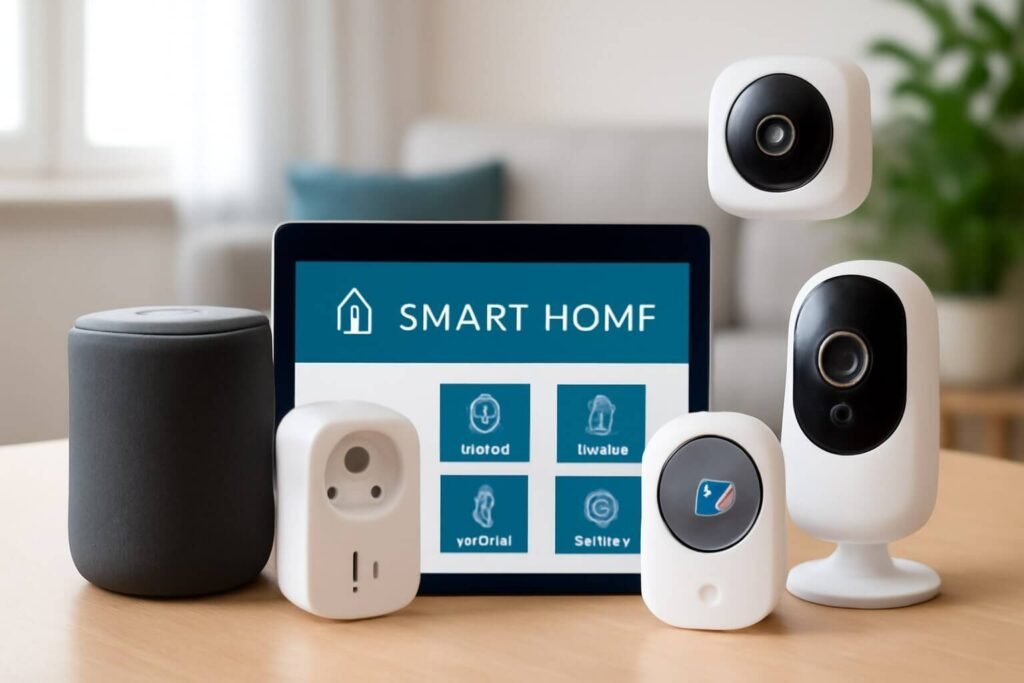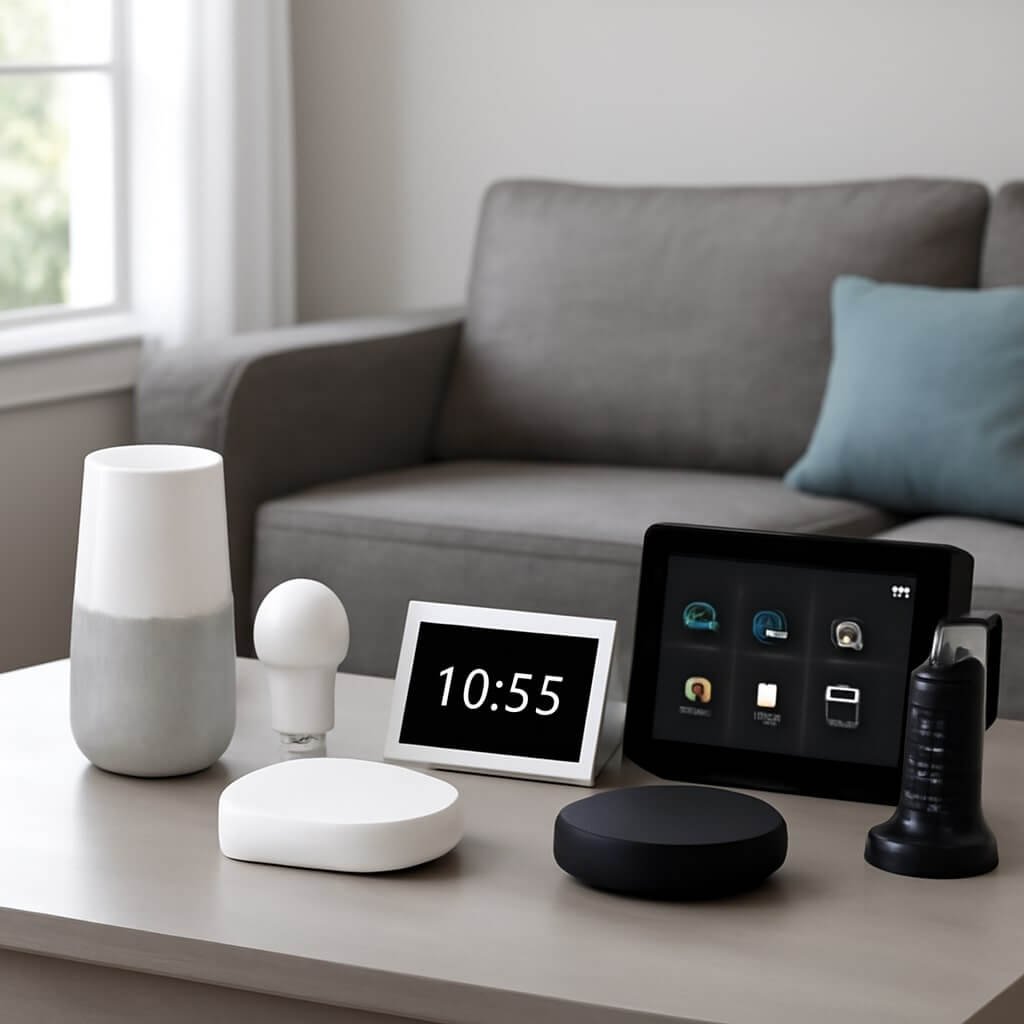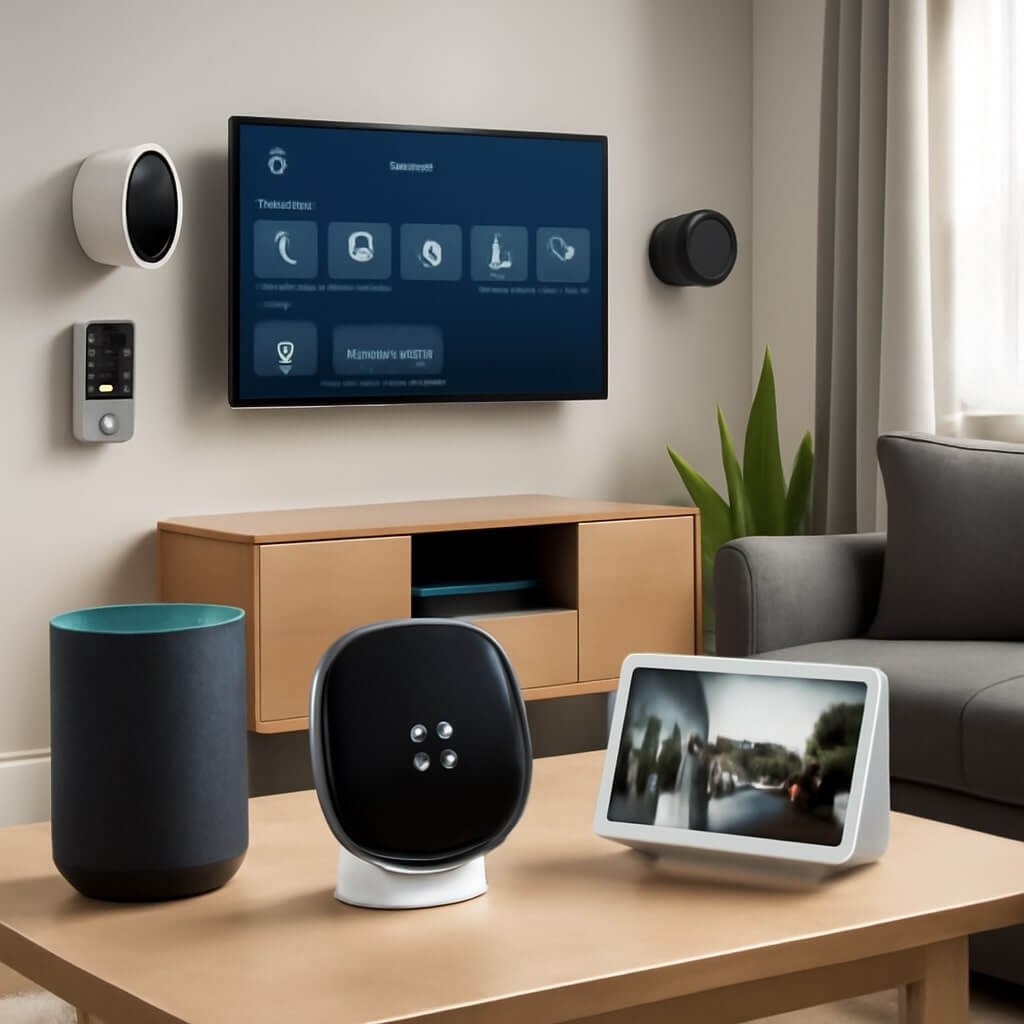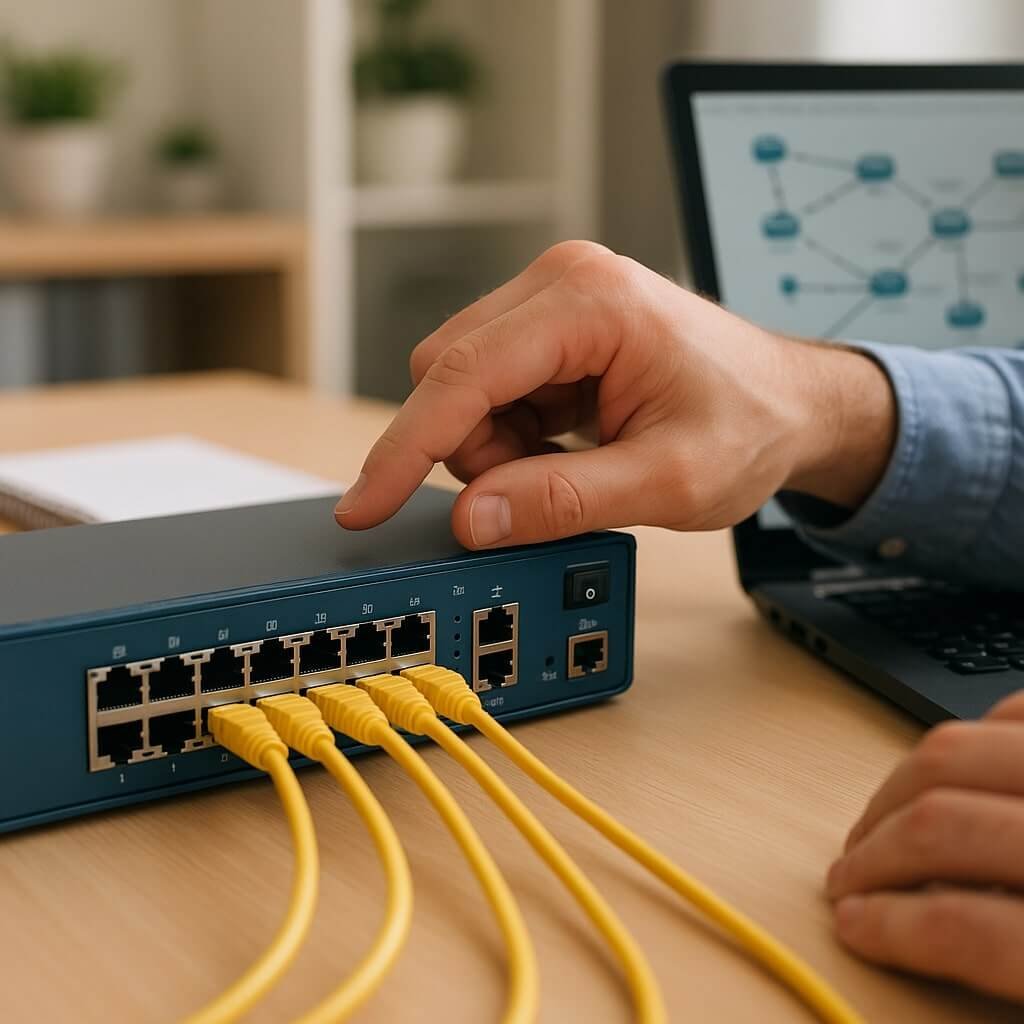Smart home automation is revolutionising the way we live, making everyday tasks simpler, more efficient, and often more enjoyable. For beginners, diving into this world might seem overwhelming at first, but with the right guidance, setting up a smart home can be surprisingly straightforward. Imagine controlling your lights, thermostat, security cameras, and even your coffee maker—all from your smartphone or by simply using your voice.
The benefits are undeniable. Smart home automation offers increased convenience, enhanced security, and energy savings, while also allowing for a personalised living experience. Whether you want to save money on utility bills, boost your home’s safety, or impress guests with cutting-edge technology, smart home systems are a game-changer.
In this comprehensive guide, we’ll walk you through everything you need to know as a beginner to start transforming your living space with smart home automation. From understanding the basics to selecting the right devices and securing your system, you’ll find practical tips and expert advice to help you create a seamless smart home experience.
What is Smart Home Automation?
At its core, smart home automation refers to the use of technology and devices to automate household functions. These devices connect to the internet or a central hub, allowing you to monitor and control various elements of your home remotely. This can include anything from lighting and heating to security systems and entertainment.
Some common components of smart home automation include:
- Smart thermostats that adjust temperature based on your schedule
- Smart lighting that can be dimmed, changed in colour, or turned off remotely
- Security cameras and alarms that send alerts to your phone
- Voice-controlled assistants like Amazon Alexa or Google Assistant that respond to commands
- Smart plugs and appliances that allow automation of everyday gadgets
Together, these devices communicate with each other to create a connected ecosystem that simplifies your life and makes your home more responsive to your needs.
Why Smart Home Automation is a Game-Changer
Smart home automation is not just about fancy gadgets; it fundamentally changes how we interact with our living spaces. Here’s why it’s a game-changer:
- Convenience: Automate routine tasks like turning off lights when you leave the room or setting the thermostat to your preferred temperature before you get home. Voice commands make it even easier.
- Energy Savings: Smart devices optimise energy consumption by adjusting lighting, heating, or cooling based on occupancy and time of day, potentially lowering your utility bills.
- Enhanced Security: Real-time alerts, remote monitoring, and automated locks increase your home’s safety and give you peace of mind, even when you’re away.
- Accessibility: Smart homes can be tailored to assist elderly or disabled individuals, improving quality of life through automation.
- Personalisation: Customise scenes and routines that fit your lifestyle, such as “movie night” dimming lights and closing blinds with a single command.
With so many advantages, it’s no surprise that millions are adopting smart home technology worldwide.
Essential Smart Home Devices for Beginners
Starting with smart home automation can be simple if you focus on a few key devices first. Here are some essentials every beginner should consider:
- Smart Thermostats: Devices like Nest or Ecobee learn your preferences and help save energy by adjusting heating/cooling automatically.
- Smart Lights: Philips Hue and LIFX offer bulbs that can change colour and be controlled remotely or on a schedule.
- Smart Security Cameras: Brands like Ring and Arlo provide cameras that send alerts and record video footage accessible from your phone.
- Smart Plugs: These allow you to control non-smart devices, turning any appliance “smart” by plugging it into a smart outlet.
- Voice Assistants: Amazon Alexa, Google Assistant, or Apple Siri act as the brain of your smart home, allowing hands-free control.
Starting small with these devices helps you get comfortable with automation before expanding to more complex systems
How to Choose the Right Smart Home Hub
A smart home hub acts as the central controller that connects and manages your devices. Choosing the right hub depends on compatibility, features, and your preferred ecosystem. Here are some popular options:
- Amazon Echo (Alexa): Supports a wide range of devices, excellent voice assistant capabilities.
- Google Nest Hub: Best for Google ecosystem users, integrates well with Google services.
- Apple HomeKit: Ideal for iPhone users wanting secure, privacy-focused automation.
Make sure the hub you choose supports the smart devices you plan to use and offers the features you need. Some hubs support multiple protocols (Zigbee, Z-Wave, Wi-Fi), which increases compatibility.
Step-by-Step Guide to Setting Up Your First Smart Device
Setting up your first smart device is easier than you think. Here’s a quick guide:
- Choose your device: Start with something simple, like smart bulbs or plugs.
- Download the app: Each device usually has a dedicated app for setup and control.
- Connect to Wi-Fi: Follow the app instructions to link your device to your home network.
- Link to a hub or assistant: Integrate your device with Alexa, Google Assistant, or your chosen hub.
- Test the device: Try basic commands or automation to ensure everything works smoothly.
Don’t rush—take your time to explore settings and get familiar with your device’s capabilities.
Best Smart Home Automation Systems for Beginners
Some systems are designed specifically with beginners in mind, offering user-friendly setups and broad device support. Top picks include:
- Amazon Alexa Ecosystem: Affordable devices, strong community support, and many compatible gadgets.
- Google Nest Ecosystem: Easy setup, good integration with Google services, excellent voice control.
- Samsung SmartThings: A robust hub with wide protocol support for various devices.
- Apple HomeKit: For privacy-conscious users with Apple products, seamless but slightly more expensive.
Selecting a system often comes down to your preferred voice assistant and the devices you want to include.
Integrating Voice Assistants into Your Smart Home
Voice assistants are at the heart of many smart homes, letting you control devices without lifting a finger. Here’s a quick overview:
- Amazon Alexa: Compatible with thousands of devices, supports routines, shopping lists, and more.
- Google Assistant: Great for answering questions, controlling smart devices, and integrating with Google apps.
- Apple Siri: Works well within the Apple ecosystem and emphasises user privacy.
With voice commands, you can say “Turn off all lights” or “Set the thermostat to 72 degrees,” making everyday tasks effortless.
Security Tips for Smart Homes
Smart home security is crucial since connected devices can be vulnerable if not properly protected. Follow these tips:
- Use strong, unique passwords for all accounts and devices.
- Enable two-factor authentication (2FA) whenever possible.
- Keep firmware and apps updated to patch security flaws.
- Separate your smart devices on a guest network to reduce risk exposure.
- Monitor device activity regularly for any unusual behaviour.
Staying vigilant ensures your smart home remains a safe space.
Energy Efficiency and Smart Homes
One of the most attractive benefits of smart home automation is energy savings. Smart devices can:
- Turn off lights and appliances automatically when not in use.
- Optimize heating and cooling by learning your schedule.
- Provide detailed energy usage reports to help identify waste.
These features help reduce your carbon footprint and save money on utility bills, making smart homes eco-friendly and cost-effective.
Common Challenges and How to Overcome Them
Beginners often face hurdles like:
- Connectivity issues: Ensure strong Wi-Fi coverage throughout your home; consider mesh networks.
- Device compatibility: Research devices and hubs before purchase to avoid incompatibility.
- Complex setups: Use manufacturer guides, tutorials, and online forums for help.
- Privacy concerns: Choose devices and platforms with transparent privacy policies.
Patience and research are key to overcoming these challenges.
Future Trends in Smart Home Automation
The future of smart homes is bright with innovations such as:
- AI-powered automation that predicts needs before you ask.
- Improved interoperability allows devices from different brands to work seamlessly.
- Enhanced security protocols using biometric and blockchain technology.
- Voice assistants that understand natural language better and anticipate user habits.
Staying informed will help you keep your smart home cutting-edge.
Frequently Asked Questions (FAQs)
1. How much does it cost to start with smart home automation?
You can start with budget-friendly devices like smart plugs and bulbs for under $50. Expanding with hubs and advanced devices may cost more, but is scalable.
2. Do I need a smart home hub to get started?
Not always. Many devices work independently via Wi-Fi or Bluetooth, but a hub helps centralise control and improve compatibility.
3. Is smart home automation secure?
Yes, if you follow best practices like strong passwords, updates, and network security, your smart home can be very secure.
4. Can I control my smart home when I’m not at home?
Yes, most smart home apps allow remote control from anywhere with internet access.
5. Will smart home devices work with my existing appliances?
Smart plugs can make many traditional appliances controllable, but compatibility depends on the device type.
6. How can I expand my smart home system?
Start with the essentials, then gradually add devices compatible with your hub or voice assistant.
Conclusion: Your Smart Home Journey Starts Here
Smart home automation for beginners made easy is more than a promise—it’s an achievable goal with the right approach. By understanding the basics, choosing suitable devices, and securing your network, you can transform your home into a smart, efficient, and secure space.
Take it step-by-step, and remember that technology is here to serve you, making life simpler and more enjoyable. Your smart home journey starts now—embrace it with confidence!






